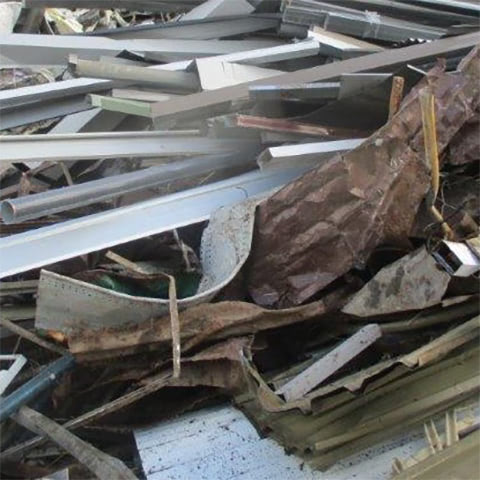Aluminium Scrap Metal

Aluminium Scrap Metal Recycling
Alumimium Scrap. Aluminium is a Light, durable and functional: these are the qualities that make aluminium one of the key engineering materials of our time. We can find aluminium window frames and light fittings in our homes, alloy wheel rims and engine blocks and pistons in the cars and trucks on our roads, in the trains and aeroplanes that take us across long distances , in the mobile phones and computers we use on a daily basis, in the shelves inside our fridges and in modern interior designs. Aluminium is one of the most recycled metals on our planet.
Aluminium is one of the most widespread metals on Earth, making up more than 8% of the Earth’s core mass. Pure aluminium does not occur in nature because it easily binds with other elements. This is also the reason that people learned about it relatively recently. Formally aluminium was produced for the first time in 1824 and it took people another fifty years to learn to mass produce it, and nearly another fifty before it was effectively recycled on an industrial scale.
Some of the most commonly recycled types of aluminium are printer’s lithographic plates (litho), aluminium extrusions, structural aluminium, aluminium roof sheets, alloy wheels, aluminium wire, automobile scrap, and aluminium sheet cuttings from industry.
Aluminium offers a rare combination of valuable properties. It is almost three times lighter than iron but it’s also very strong, extremely flexible and corrosion resistant. It doesn’t magnetise, it’s a great electricity conductor and forms alloys with practically all other metals. One interesting fact is that if all copper wire were replaced with aluminium-zirconium wire in a car, the vehicle would weigh 12 kg less.
The mix of qualities listed above would already be enough to make aluminium the top choice in industry, however, there is another property that is just as significant: aluminium can be recycled over and over again. Aluminium and its alloys can be melted down and reused without any detriment to its mechanical properties. Scientists have estimated that 1 kg of recycled aluminium cans can save up to 8 kg of bauxite, 4 kg of various fluorides and up to 15 KWH of electricity. The recycling process is also of great benefit to our planet as the recycling process produces less than one fifth of the greenhouse gas emissions than aluminium ore smelting and about 75% of aluminium produced in the time that the aluminium industry has existed is still in use today.
There are currently four aluminium smelters operating in Australia producing Australian primary aluminium metal. Production was 1.59 million tonnes in 2020, of which 1.43 Mt was exported. Australia is the world’s sixth largest producer.
Australia is the world’s sixth largest producer of aluminium and has 4 operating smelters. Smelter location tends to be dictated primarily by the availability and proximity to historically low-cost electricity sources. Location is also influenced by other factors such as transport costs and the availability and quality of other infrastructure. As a result, all of Australia’s aluminium smelters are located close to or on the coastline.
The Australian smelting industry continuously focuses on improving electricity efficiency, while also leading the global industry in controlling direct greenhouse gas emissions. As aluminium smelters cannot safely accept general or contaminated scrap, recycling in Australia is largely carried out by specialist metal recyclers such as Top Dollar who act as a filter and sorting service to the end user. Top Dollar Metal Recyclers has recycled more than 7000 tonnes of aluminium throughout the twenty years of operations and continues to provide both domestic and export tonnes of all ferrous and non-ferrous metals.

